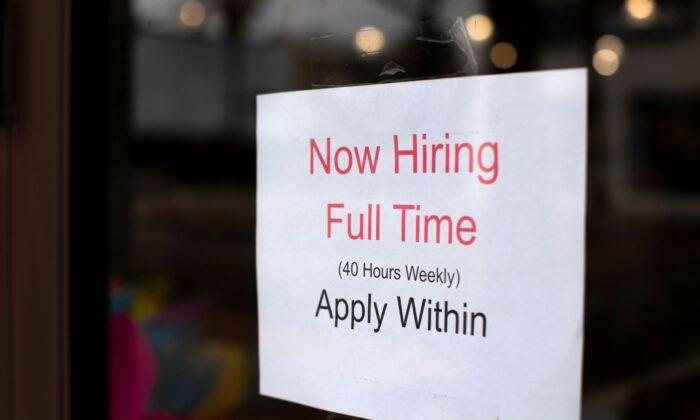WASHINGTON—U.S. business activity slowed moderately in November amid labor shortages and raw material delays, contributing to prices continuing to soar halfway through the fourth quarter.
Data firm IHS Markit said on Tuesday its flash U.S. Composite PMI Output Index, which tracks the manufacturing and services sectors, fell to a reading of 56.5 in mid-November from 57.6 in October. A reading above 50 indicates growth in the private sector.
The rate of growth remains above the survey’s long-run pre-pandemic average, and is consistent with an economy that is regaining steam after a brief lull in the summer.
The services sector accounted for the pull back in activity, with IHS Market noting “some resistance to higher prices.”
Though many firms reported business was strong because of increased travel both domestic and international as well as the further easing of COVID-19 restrictions, the pace of growth slowed relative to previous months.
“The U.S. economy continues to run hot,” said Chris Williamson, chief business economist at IHS Markit. “However, the slowdown underscores how the economy is struggling to cope with ongoing supply constraints.”
The survey’s measure of prices paid by businesses for inputs jumped to 78.1. That was the highest reading since the series started in 2009 and followed 74.1 in October. These higher prices are being passed on to consumers, indicating that inflation could remain uncomfortably high for a while.
Consumer prices surged in October, logging their biggest annual increase in 31 years.
A measure of employment at businesses was little changed in the first half of this month. There were 10.4 million job openings as of the end of September.
Millions of Americans remain home even as generous federal government-funded unemployment benefits ended in early September and companies are raising wages. The pandemic has also led to early retirements and career changes.
The survey’s flash services sector PMI fell to a reading of 57.0 early in the month from 58.7 in October.
Economists polled by Reuters had forecast a reading of 59 in mid-November for the services sector, which accounts for more than two-thirds of U.S. economic activity.
Unfinished work at the services industry businesses piled up at the second-fastest pace on record, IHS Markit said.
Despite the supply constraints, manufacturing activity picked up, amid an influx of new orders. The survey’s flash manufacturing PMI increased 59.1 from a reading of 58.4 in October. Economists had forecast the index for the sector, which accounts for 12 percent of the economy, climbing to 59.
According to IHS Markit, difficulties securing inputs and finding affordable transportation for goods led to cost burdens rising at a record pace in mid-November. It noted that firms increased their selling prices at the second-steepest pace in more than 14–1/2 years.





